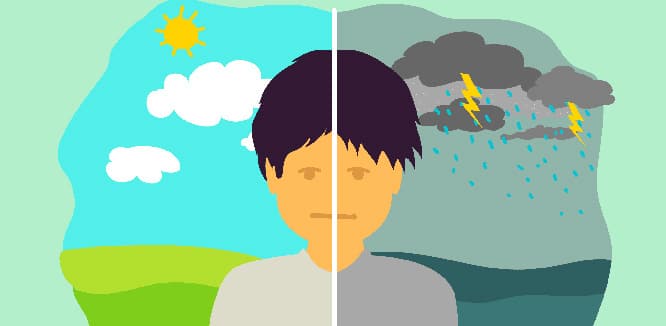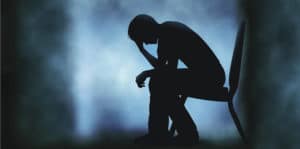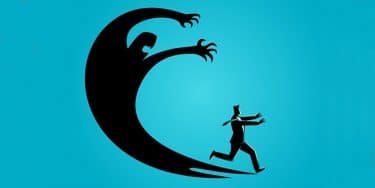Bipolar disorder, is a common mental health problem which has severe fluctuations in mood. In one polar, there is mania which is characterized by a great enthusiasm; and in the other polar, there is depression which is characterized by a serious down and low mood. Bipolar disorder is a serious disorder since it creates unusual and severe ups and downs in mood and energy. These fluctuations are different than those everyone experiences at some point in their lives. Individuals may have serious problems about their daily routines, social relations, occupational and educational life and they may even commit suicide. They may experience unusually intense emotions and behaviors, also changes in sleep patterns and activity levels. Symptoms of bipolar disorder change according to the mood. Bipolar disorder may affect individuals for a life time depending on its severity; however, it is treatable, and thus, individuals can have a productive life.
Table of Contents
What is bipolar disorder?
Bipolar disorder, also known as manic-depressive, is a brain disorder that causes unusual changes in mood, energy, activity levels, and ability to perform daily tasks. The person who feels enthusiasm and full of energy in the mania period may feel sad or hopeless in the depressive period. It may lose interest in most activities. These mood changes can affect negatively sleep, energy, activity, behavior, and thinking ability. (1)
What is manic episode?
Patients are extremely active and enthusiastic in manic episodes. They may talk about extraordinary and unreal plans. They may experience exaggerated happiness and energy, great self-confidence and grandiosity, no need to sleep or denying to sleep; they may participate fun but dangerous activities without thinking about its consequences, spend too much money or drive too fast.
What is depressive episode?
Depressive episode is the opposite of manic episode. In this episode, individuals experience hopelessness, desperateness, pessimism, low self-confidence, sadness, self-worthlessness, excessive guilt and regret. They cannot take pleasure from the activities which they used to take. They get easily tired due to lack of appetite and sleeplessness. They may have unexplained pains and suicidal thoughts.
Causes of bipolar disorder
Although the absolute cause of bipolar disorder is not known yet, scientists and specialists think that a combination of physical, environmental and social factors contribute to development of this disorder.
Scientific studies show that genetic effects are important. For instance, individuals have a risk of 1-2% if no relative of them has bipolar. However, this risk becomes 7-8% when a family member or a sibling has bipolar disorder.
Another reason is an imbalance in brain chemicals which can be caused by changes in transfer of chemicals providing intercellular transmission and in the levels of those chemicals. This condition damages transmission in the brain and causes disturbances in thinking, memory, learning and mood regulation.
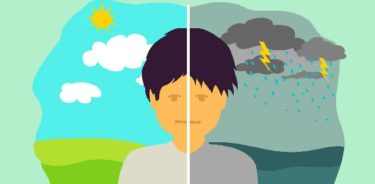
Loss of loved one; physical, sexual or emotional abuse; daily hassles such as money, job or relationship problems can trigger the symptoms of bipolar disorder.
Moreover, it can be related to seasonal changes. Patients can be in manic episode in spring and summer while they experience depression in autumn and winter.
Risk factors of bipolar disorder
This disorder is a common one and it can affect people of all ages. However, research show that at least half of the cases have an onset before the age of 25. Some individuals may show first symptoms in childhood. It rarely develops after the age of 40. Rates in women and men are around equal levels. (2)
Symptoms of bipolar disorder
Symptoms of manic episode
- Irrational and exaggerated joy or temper tantrums
- Become provoked and getting angry easily
- Speaking too fast and too much; and wandering off continuously
- Making marginal decisions and having risk taking behaviors
- Acceleration of thoughts
- Exaggerated self-esteem and self-worth
- Over reactivity and less need to sleep and eat
- Feeling full of new ideas and making extraordinary plans
- Will to be satisfied irrationally; shopping too much, sudden trips, excessive and indiscriminant sex, investments with high risk, and driving too fast
- Hallucinations and delusions
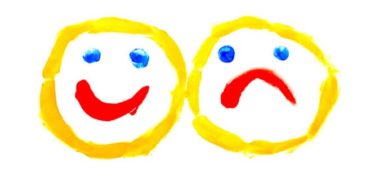
Mania and hypomania are two separate episodes; however, they have the same symptoms. Mania is more severe than hypomania, and it causes more obvious problems at work and in social relationships.
In the depressive episode, the opposite symptoms which are sadness, crying spells, sense of self-worthlessness and guilt, loss of energy and sleep disturbances occur.
Symptoms of depressive episode
- Depressive mood and low self-esteem
- Loss of interest in daily activities
- Loss of taking pleasure
- Low energy
- Feelings of sorrow, desperateness, pessimism and loneliness
- A continuous state of anxiousness
- Talking slowly; tiredness and weak coordination
- Sleeplessness and oversleeping
- Difficulty in staying focused and memory
- No desire to eat or overeating
- Thoughts of or attempts to suicide
In some individuals, both mania and depression symptoms can be seen together at the same time. In these cases, patients may feel both sad or desperate, and much energetic in the meantime.
Types of bipolar disorder
- Bipolar I: For this diagnosis, having mania or a mixed type is essential. This is more severe than other subtypes, and it may require inpatient treatment.
- Bipolar II: The subtype in which hypomania and depression are experienced.
- Cyclothymia: The subtype in which depressions (not as severe as major depression) continuing for more than 2 years and hypomania follow each other, and a normal mood is not observed for more than 2 months.
- Atypical Bipolar: This type does not fit to any other subtypes. It may have different patterns depending on the patients. (3)
Diagnosis of bipolar disorder
Intensity of symptoms, how long they have been there and psychiatric history must be known for diagnosis. When only presence of depression, and past manic, hypomanic, or mixed episodes are known; these make hard to make a diagnosis.
If these phases are not clear, it is also possible that diagnosis may be unipolar depression. In these cases, the information about presence or absence of bipolar disorder in the family may help for diagnosis. If any other family member has bipolar disorder, psychiatrist may meet them, too.
The most certain diagnosis is possible when a psychiatrist sees the patient in an acute phase of manic, hypomanic or mixed episode. Yet, sometimes this may not be possible and it may be confused with other psychiatric disorders. In these conditions, doctors should follow the patients regularly so that they can make a clear and true diagnosis. For the sake of this, it is very important that the same doctor should follow the same patient.
For the diagnosis, there is no need to use psychological tests, brain imaging techniques such as MRI or tomography, or EEG. Only in some rare conditions, these tests are used in order to make a distinction between bipolar and some neurological disorders.
By looking at symptoms, the functionality of thyroid glands and some blood tests may be required since when thyroid gland works less or more, anemia and endocrinologic problems may create symptoms similar to those of depression or mania. (4)
How to treat bipolar disorder?
Since this disorders’ ups and downs are very strong, they affect individuals’ daily lives adversely. Fortunately, even in the most severe cases, treatment helps individuals keep their mood changes and other symptoms under control.
Due to individualistic differences in course of disorder, combination of tailor made methods is used mostly. With the help of these methods, decreasing the severity and frequency of episodes and that patient lives a normal life as much as possible are aimed. (5,6)
Common treatment alternatives
- Medications which repress manic episodes and are taken every day and for a long period of time
- Medications which aim to treat symptoms in depressive or manic episodes
- Learning triggers of mania and depression attacks
- Psychological treatment
- Life style suggestions: Regular sleep and appetite, regular physical activity, breathing exercises, learning how to cope with anger and depression, spending time for determining daily routines and pleasure giving activities, not using alcohol and drugs, avoiding contexts including too much stress
Bipolar disorder medications
Mood regulators
They are both used in intense acute times, and in prevention treatment for long time in order to eliminate new phases. Lithium and anticonvulsants are in this group of medication.
- Lithium: It is the most commonly used medication for the treatment of bipolar disorder, and a long term method to treat attacks of mania, hypomania and depression. When this medication is prescribed, patients should stick to the dose which their doctor recommend, and they should not suddenly stop taking medication without consulting to the doctor. If lithium is taken more than prescribed dose, it can cause diarrhea and vomiting.
Patients should immediately inform the doctor in case of any side effects. Another important point about lithium intake is blood test to make an often check the level of lithium in the blood. Patients should give blood samples 12 hours after the last lithium intake.
This control makes doctors be sure that lithium levels in blood are not too low or too high. Low levels causes that medication does not be effective, and high levels causes an increase in side effects, even poisoning.
- Anticonvulsants: The medication which are used to prevent or treat epileptic attacks, bipolar disorder and neuropathic pains.
Antipsychotic drugs
These drugs are mostly used in psychotic disorders like schizophrenia; yet, their low doses are used as a supportive treatment for mood regulators in bipolar disorder treatment, especially in fulminant periods.
Antidepressants
They are not used in depressive episodes in bipolar disorder; but, they are sometimes used with a mood regulator. They have a considerable risk of causing a shift to mania when they are used in depressive episode. Using a mood regulator with antidepressants decrease this risk significantly.
Research show that 64% of individuals with bipolar disorder do not take their medications regularly, and the most important reason of that episodes repeat is not taking medications regularly or stopping taking them completely.
These are the reasons why drug compliance is low:
- Denying disorder or diagnosis; thinking they are not have bipolar and they will never have
- Side effects of medications
- Hiding diagnosis and using medications from people
- Biased opinions of families or social environment to use of medication
- Feeling that one’s freedom is restricted or feeling of being sick
These thoughts are based on lack of information; and eliminating these biases is necessary for a successful treatment.
Bipolar disorder and other disorders
Some symptoms of bipolar are similar to others’, and this may make doctor’s decision to diagnose difficult. These are some of the disorders which have similar symptoms with bipolar:
Borderline personality disorder
Borderline and bipolar disorders can be lived together, and sometimes, cyclothymia subtype of bipolar disorder can be confused with borderline personality disorder. Especially intense anger, impulsive and reactive behaviors in manic episodes, and suicidal thoughts and behaviors in depressive episodes can be confounding. Therefore, waiting for the end of episodes can be necessary for a right diagnosis.
Borderline personality disorder starts in adolescence and continues for a life time. Confusion in self-perception, feeling the void inside, emotional fluctuations, sudden and impulsive self-destructive behaviors, ups and downs in social relationships, mood changes, problems in family relationships and childhood traumas are obvious in this disorder. Normal phases in bipolar disorder are not observed in borderline personality disorder.
Schizophrenia
Sometimes, individuals with bipolar disorder may have psychotic symptoms such as hallucinations or delusions. Psychotic symptoms tend to be in harmony with extreme mood of individuals. For instance, individuals may think that they are famous, have lots of money and supernatural power in manic episodes. In depressive episodes, they may think that they are hopeless and penniless, or they committed a crime. As a result, bipolar disorder may be confused with schizophrenia.
Coping with suicidal and self-destructive thoughts
Individuals with bipolar disorder may have suicidal thoughts as they have extreme sense of self-worthlessness. Unless they are treated, these thoughts may gain strength by time.
Self-destructive behaviors are usually symptoms of a mental disorder since they are means to have control on own lives and avoid mental distress for some people. These behaviors may not be related to suicidal thoughts or attempts.
If individuals think about self-destructive behaviors or suicide; they should ask close ones for help, call the doctor or go to the nearest emergency service immediately.

